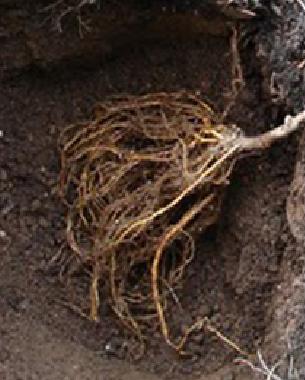If you are planning to buy plants that do not cost you dearly & most importantly, if you want them to be shipped to your place then the answer is “Bare Root Plants“. Let’s discuss what are bare root plants & how to plant them?

Bare Root Plant
Bare root plant by and large alludes to a one that is offered for sale with its roots exposed, rather than planted in a container with soil. This is the best method for some plants to be sold, especially when they are being transported a substantial distance. In simple words, bare-root plants are plants that have been removed from the soil. Nurseries or growers dig the plants while they’re dormant, shake or wash soil from the roots, and surround the roots in moist packing material that retains moisture, such as shredded paper, sphagnum moss or coco peat, prior to shipping. In some cases, nurseries also store them as well, but make sure to keep them stay dormant.Typical storage conditions include high humidity and temperatures around freezing.
What all plants come bare root?
Not all types of plants can be sold without soil or as bare root. Common bare-root plants include roses, ornamental and shade trees, fruit trees, shrubs, vines, such as grapes or kiwi and several perennials, including hosta and day-lilies.
Benefits of bare root plants?
There are several benefits of purchasing bare-root:
- They are cheaper than the potted plants.
- They often establish more quickly.
- Because they’ve been grown in the ground, these plants have never been root-bound.
- You’ll find a greater selection as they can be shipped via mail.
How to plant bare root plants?
Bare-root plants must be planted as soon as possible after purchase or you received the mail order. Proper planting is critical to their survival and long-term success.
- Try to plant them as soon as possible, preferable the same day you purchased them or received the mail. In case of a delay, leave plants in their packaging and put them in a cool, shady place.
- Remove the packing material from the roots and inspect the roots. Healthy roots are flexible, bending instead of breaking, and you might see new, small, white roots. Also look for damaged or rotten root sections, and make sure to trim these away before you plant.
- With roses and other woody plants, check stems to make sure they’re not shriveled and dry, trim any dead part you find.
- The most important part is it to re-hydrate the roots by soaking them in a bucket of water for about 1 to 2 hours. Keep the roots moist at all times before and during planting.
-

Cone Method
- Dig a hole that is twice the diameter of the root spread. If possible, leave a cone of undisturbed soil in the center of the hole. The hole should be deep enough to accommodate the roots without crowding or bending. Adjust the height of the cone so that the crown (where the trunk meets the roots) will sit at or slightly above soil level with the roots spreading downward. Planting the crown too deep is a common cause of plant failure.
- While holding the plant upright, begin back-filling the hole, pressing soil around and between the roots. Use your hands to firm the soil and eliminate air pockets. Continue adding back-fill and packing it down until you’ve filled the hole.
- Water the plant thoroughly, and then allow the water to soak in, repeating several times. The goal is to ensure even watering so the soil is drenched and any large air pockets are eliminated.
- Keep the soil moist all the time but not waterlogged.
- Avoid applying any fertilizer for first three months.
Tip
Bare-root plants are slow to “wake up.” Expect to wait four to six weeks after planting until you see signs of growth.
what are bare root plant, bare root plants, bare root plant meaning, bare root planting season, bare root planting guide, how to plant bare root succulents, how to plant bare root roses, how to plant bare root trees, how to plant bare root plants, bare root roses, planting bare root roses, pushpanjali nursey, bare root hawthorn, bare root yew plants, bare root box hedge plants

We want to purchase bare root coloured plant.How can we purchase.pl tell the procedure
Please watch this video. All the details are given in the same & in its description : https://youtu.be/9l093OfJQMQ